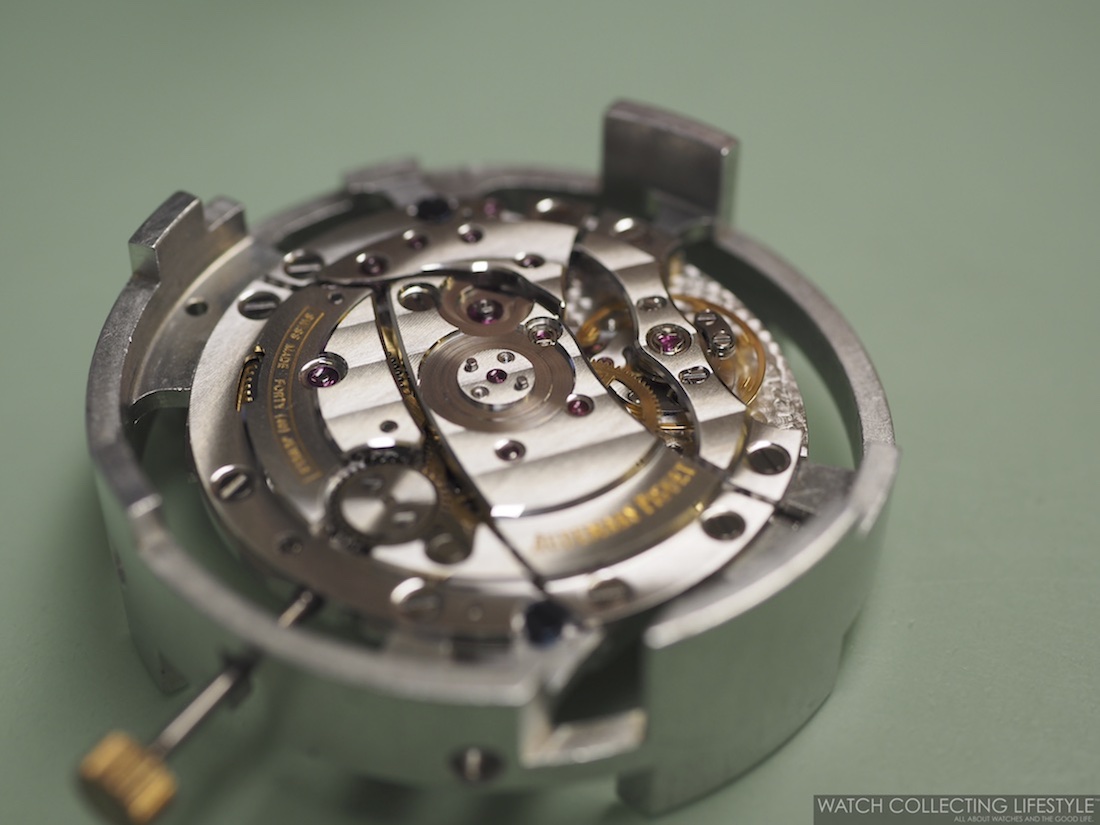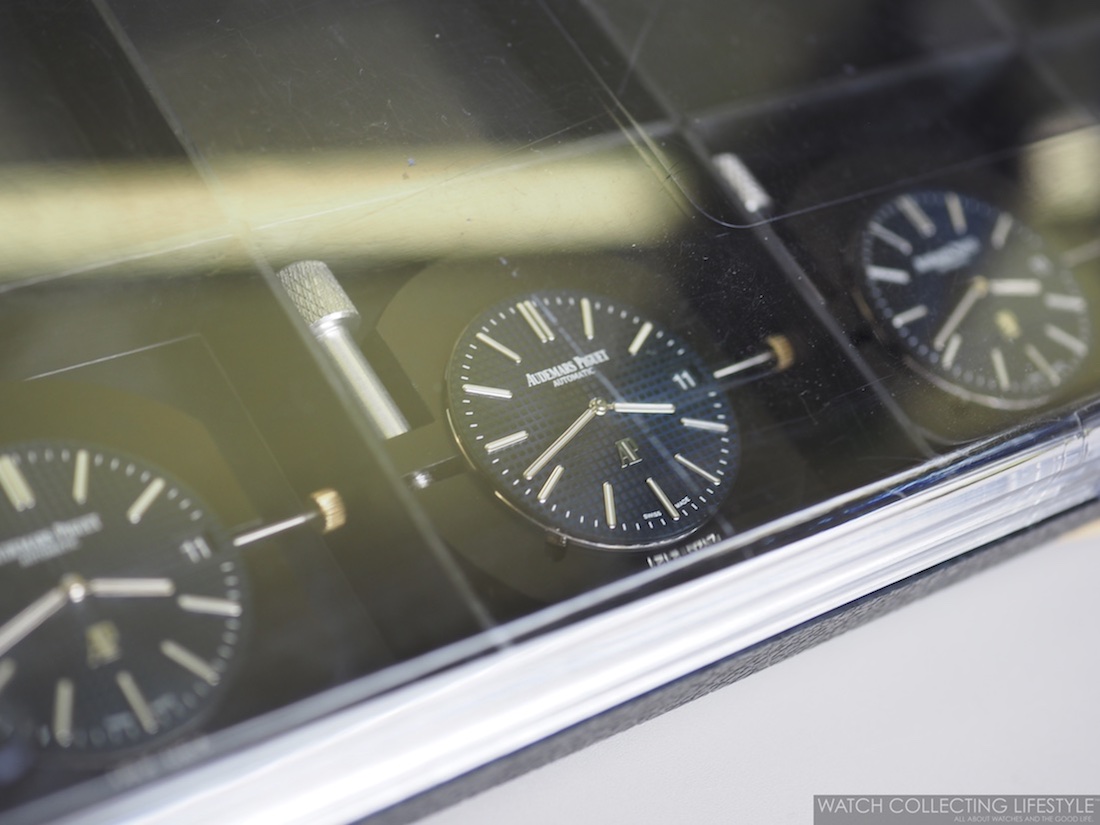Our visit to the Audemars Piguet Manufacture was documented almost two years ago here. But today, we are going to show you through our images and some of the videos produced by Audemars Piguet, the making of the iconic Royal Oak. When you walk through the doors of the newest and largest building at the Audemars Piguet manufacture suited up in an electric blue guest lab coat you know you are about to experience how the magic is done at Audemars Piguet in Le Brassus. The making of an Audemars Piguet Royal Oak involves dozens of tasks and a mastery that you only obtain after breaking the rules. To break the rules, you must first master them.
Making of the Movement for the Audemars Piguet Royal Oak
During our visit, our very first stop was at the assembly workshop where the automatic calibre 3120 was being inspected, assembled, oiled, and regulated. With a fully manual process —except the oiling of the jewels which is done by a computerized robot— and with no less than four regulation operations, the automatic calibre 3120 comes to life in this workshop. This movement that used to be the beating heart of all modern automatic Royal Oaks —with the exception of the Royal Oak Jumbo Extra-Thin powered by calibre 2121— and Royal Oak Offshore Divers, undergoes a very stringent number of quality control operations as well as microscopic scrutiny before making its way into the casing workshop.
Making the Case and Bezel of the Audemars Piguet Royal Oak
While the cases and bezels are being made at a different building, the process that makes the Audemars Piguet Royal Oak the iconic watch it is is simply just remarkable. It all begins with cases and bezel being cut straight from blocks of metal —stainless steel, yellow gold, rose gold, white gold, or platinum—, then the holes of the bezel are drilled, cases and bezels are inspected, then polished and chamfered by hand. Afterward, a very precise operation that requires a lot of dexterity and love for the art of watchmaking is giving the bezel its unique vertical satin-brushed finish. An operation that is performed by hand against a diamond paper with very fine grit. See the video below for the whole process.
Making of the Dial of an Audemars Piguet Royal Oak
After the cases are completed and thoroughly inspected, the process of making the dials is taking place at the dial manufacturing department. We explain the different types of Audemars Piguet Royal Oak Tapisserie here.
Now, how does Audemars Piguet create these iconic 'Clous de Paris' guilloché pattern dials?
The brass dial is engraved by a burin —a precision metalwork chisel— that reproduces the motif on a disc attached to the machine, like a pantograph. A pointer rotates across the disc from the periphery to the center. The system is combined with a tool that forms the little lozenges between the pyramidal squares and takes between 20 and 50 minutes, depending on the dial's diameter. It's a delicate operation. A mere skip is all it takes to damage the piece as the slightest impact is as visible as dust on a mirror. Here's a video courtesy of Audemars Piguet showing the work to create one of these iconic dials. Below there's a video showing the process.
The Casing of an Audemars Piguet Royal Oak
Then, finally, after the movements have been inspected, regulated, and passed the quality control, the Audemars Piguet Royal Oak is ready to be cased. An operation fully done by hand and which after completion requires another round of regulation of the movement after testing it one more time right after it’s being cased.
Making of the Audemars Piguet Royal Oak Bracelet
It’s known that the inspiration and design of the Royal Oak bracelet comes from the shape of the back of a seahorse which has been used often in some of the vintage catalogs showcasing the Royal Oak. A bracelet that is so unique in appearance and comfort, that can be referred to as ‘the best bracelet in the watch industry’.
Much like a supple joint, the bracelet is made up of a juxtaposition of small parts graduated by decreasing size. An exemplary configuration and the ideal model to hold the case firmly in place while providing complete freedom for wrist movements.
The sophisticated construction of the Royal Oak bracelet uses parts that are all different in size. Arranged in diminishing order so as not to weight down the watch, they are graduated into seven different sizes, alternating bracelet links, and connecting studs. Each of these parts is meticulously machined, pierced, polished, and checked in order to fit together perfectly with no gaps or unevenness. The video below shows the operations to make this amazing bracelet.
For more info on Audemars Piguet click here.





























